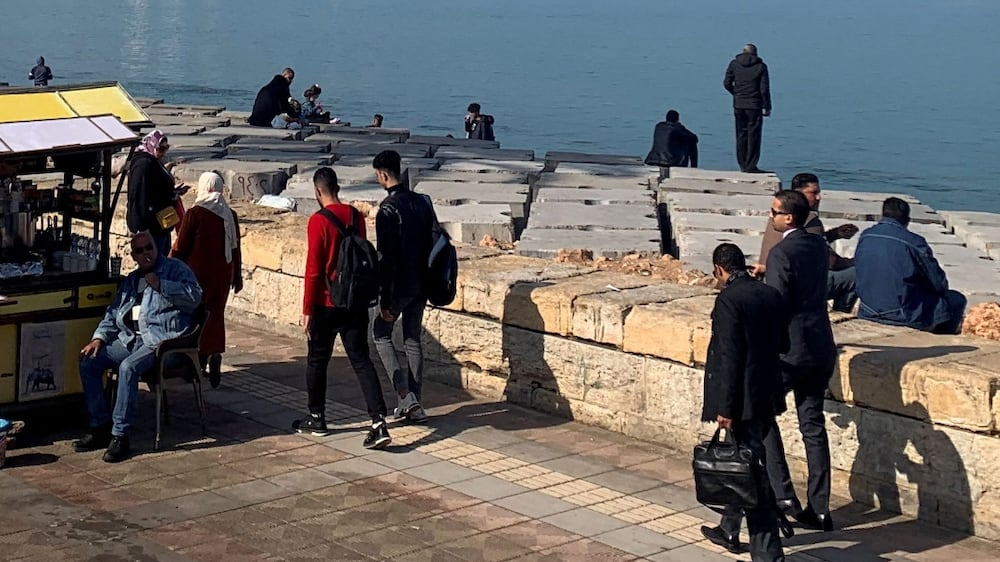Long before Boris Johnson warned last year that Alexandria could be “lost under the waves”, many of the Egyptian city’s residents could see that something was not quite right in their ancient metropolis.
Summer is much hotter than it used to be and drags on until October, even November, they note. Winter, they complain, is now much colder than they remember it to be two or three decades ago. Winter downpours are heavier and more frequent, they lament.
And it’s not just hearsay.
Experts have been sounding the alarm, saying climate change is wreaking havoc in Alexandria, a city that was once a bastion of culture and science and now a cramped metropolis of seven million.
The sea level is rising steadily and the city’s low-lying areas could be completely under water 30 years from now. It rose by 5.6 centimetres between 1944 and 1990, and since 2006, it has been rising by three millimetres every year.
The danger transcends the boundaries of the city towards its eastern flank in the Nile Delta where the country’s most fertile farmland is being eroded, allowing the sea to advance inland.
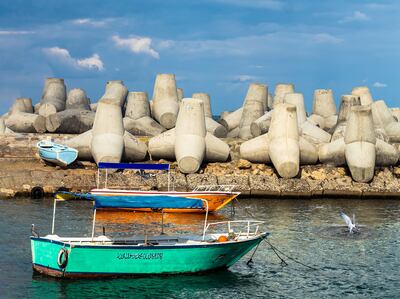
The situation is so dangerous, the city was used as a warning by former British prime minister Boris Johnson at last year’s climate change summit in Glasgow.
“Four degrees and we say goodbye to whole cities; Miami, Alexandria, Shanghai. All lost beneath the waves,” he said.
But it will take a long time before Mr Johnson’s prediction on Alexandria materialises, Abbas Al Sharaky, geology and water resources professor at Cairo university, told The National.
“Temperatures will continue to rise if man’s polluting ways persist. But it’s difficult to reach four degrees. It would take hundreds of years or, if precautions are taken, thousands,” Mr Al Sharaki said.
The prediction, however, has left Alexandrians vexed and afraid for their city. Many of them will be looking to next month’s Cop27 climate change summit in Egypt to assure them that action will be taken.
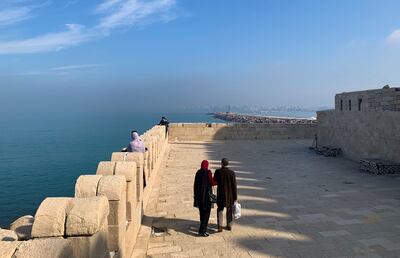
But such assurances can only be part of a global deal reached by representatives of about 200 countries meeting at next month’s Cop27 summit at the Egyptian Red Sea resort of Sharm El Sheikh. That deal would have to include practical and well-funded steps for the implementation of an agreement reached in 2015 in Paris.
That pact is centred around a pledge by participants to keep temperatures below 2°C above pre-industrial levels and pursue efforts to limit the increase to 1.5°C.
The deal will also have to include adequately funded measures to rein in gas emissions and help the nations most affected by climate change to reverse or contain the effects of the change, for which the leading industrialised nations are mainly responsible.
Mr Al Sharaky says that a 50-centimetre rise in sea levels would flood 500,000 acres of farmland in the north of the Nile Delta, displace 4 million people and double the size of existing lakes in the region.
A 1.5-metre rise in sea levels would send the Mediterranean 25 kilometres inland, inundating 1.5 million acres and displacing 8 million people, he said.
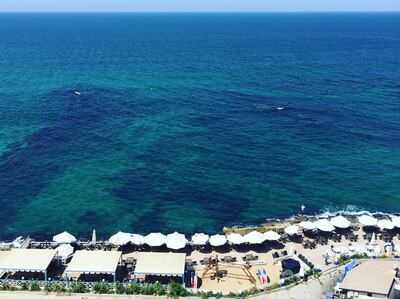
He said the erosion of Egypt’s Mediterranean beaches can be blamed in part on the Aswan High Dam in southern Egypt, which stopped the water of the Nile pouring into the Mediterranean at the northern tip of the delta.
The Egyptian government is already spending a total of 1.6 billion Egyptian pounds ($816,619) to protect the low-lying areas of Alexandria, placing barriers made of giant concrete cubes or triangle-shaped blocs to keep the water at bay and prevent further erosion.
Special attention is given to one of the city’s seafront landmarks, the 15th century Qaitbay castle, which has more than once been renovated over the years and which suffered significant damage when Britain shelled the city from the sea in 1882 during its campaign to take over Egypt.
Alexandria hit by heavy floods after thunderstorms

A 270-million-pound project to protect the castle is under way, with cranes being used to place concrete triangles around it to keep the water from reaching the castle, especially during winter when strong winds whip up waves of two metres and higher.
A changing city
The continuing work to protect the most vulnerable segments of areas in the city directly facing the sea has had limited success, with residents recounting how seawater lashed buildings, cars and stores on the seafront last winter in ways they had not seen before.
“Too much rain, too hot and too cold,” said Mohammed Ali, a 35-year-old who works at a beach in the heart of the city, summing up Alexandria's weather. He complained just as much about the barriers turning the water into something akin to a pond.
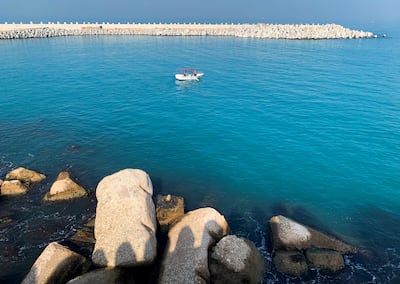
“I don’t like swimming here any more. I loved wrestling with the waves. That made me feel alive. The water was cleaner, too. Now, I just get wet when I am hot and immediately get out.”
Another Alexandria resident, 47-year-old Hesham Abdel Salam, a father of five, echoed his impressions of the city in recent years.
“Last winter, for example, people, stores, cars and homes were like in a deep freezer,” he recounted. “It was so unusual. So different from how things were years ago.”
“There are several ‘Alexandrias’ that once existed and are now beneath our feet. If this one goes too, it will not be the end of our city,” 37-year-old self-employed Ahmed Reda said with a nervous laugh, referring to the city’s history of surviving great fires, tsunamis and earthquakes over the centuries.
A city of seafarers
The bond between Alexandrians and the sea cannot be exaggerated.
On a recent late October afternoon, thousands relaxed on beaches the entire length of the city’s sea front. Many of them waded their feet in the cold seawater. Others were brave enough to take a dip. Hundreds were fishing, patiently standing or sitting on the concrete blocks used to keep the seawater at bay. Families picnicked. Young couples strolled.

The magical and romantic vibe of Alexandria is unmistakable, a source of inspiration for artistic creation that has immortalised the city; from William Shakespeare’s Antony and Cleopatra and Lawrence Durrell's The Alexandria Quartet, to Constantine Cavafy’s poems and the enchanting “Chat Iskandriyah” by Lebanon’s Arab diva Fairouz, and countless Egyptian movies set in the city.
The city was famous, some would say notorious, for the carefree lifestyle of its elite during the years between the First and Second World Wars, the height of its cosmopolitan character. At the time it was home to thousands of Europeans hailing from places like Greece, Italy, France and Cyprus.

Prize-winning novelist Hagag Adool, an Alexandria native of Nubian heritage, believes the city’s present day malaise goes beyond climate change. He cites overcrowding, the rise of religious and social conservatism, the proliferation of shanty towns and the demolition of historical buildings and their replacement by distasteful high-rise apartment towers.
“We lived in Alexandria when it was truly the most beautiful city in the Mediterranean. Prettier than Nice [in France]. Now it is in a pitiful state,” Mr Adool, 78, told The National.
“I believe Alexandria will return to its old ways. Like the phoenix, it will rise from the ashes, but not in my lifetime.”
